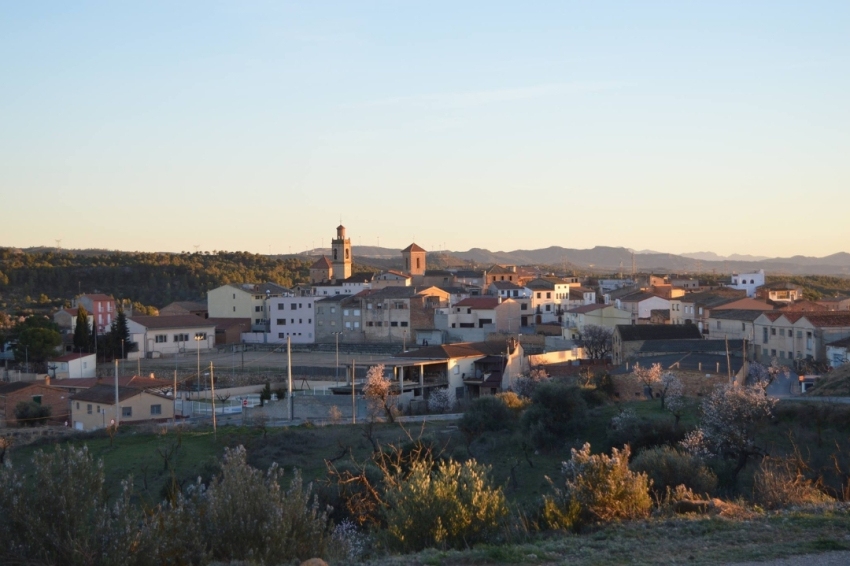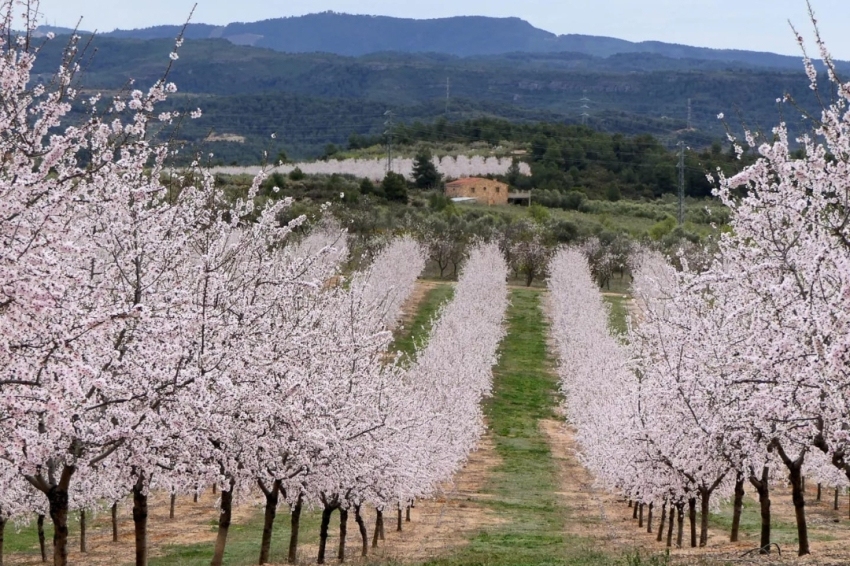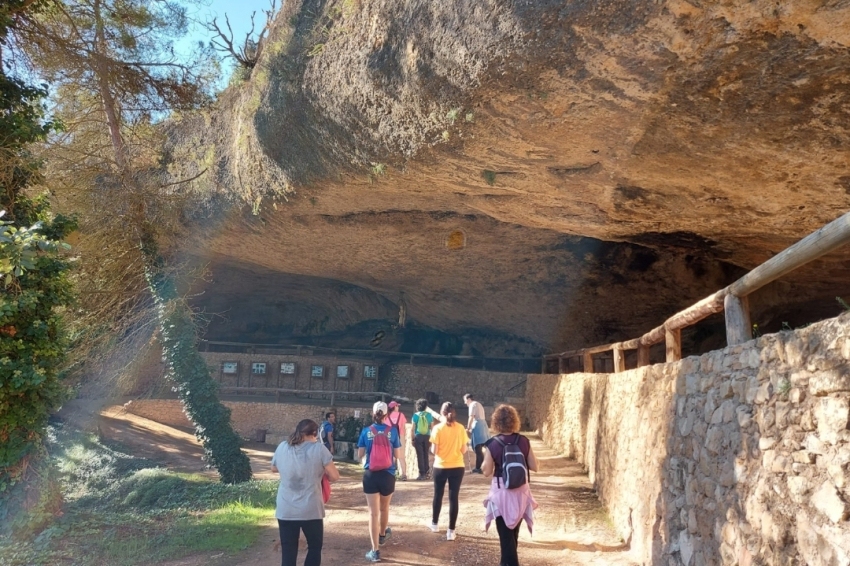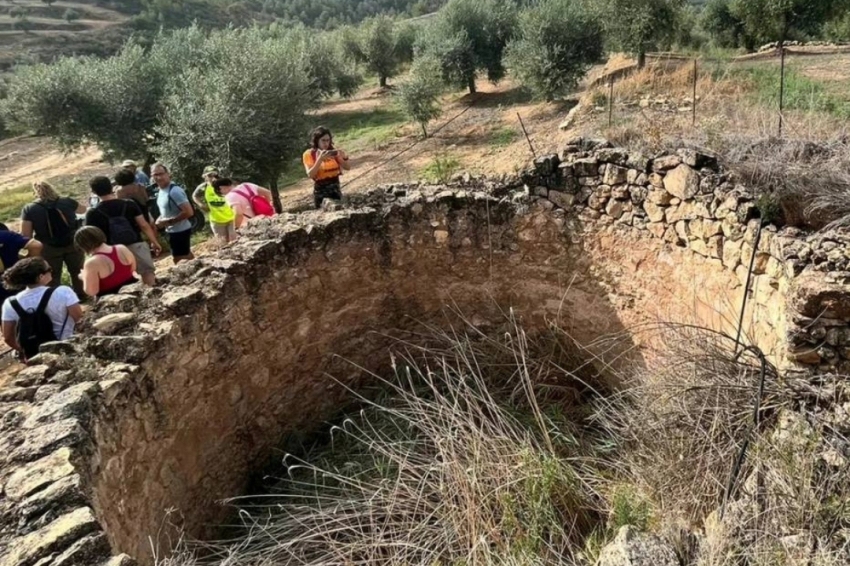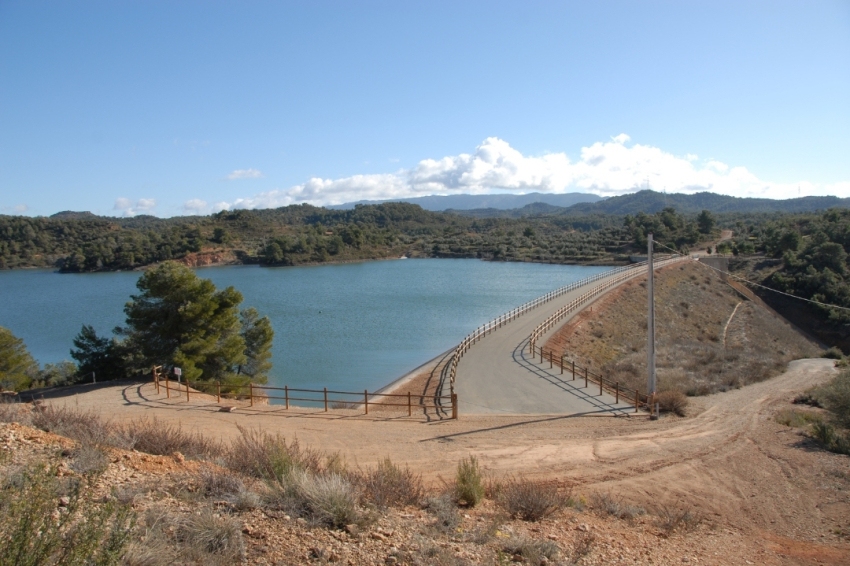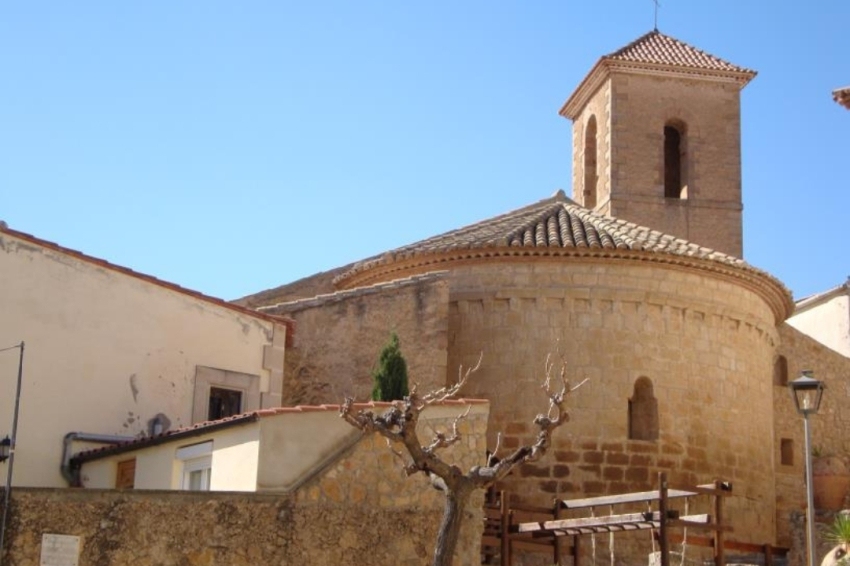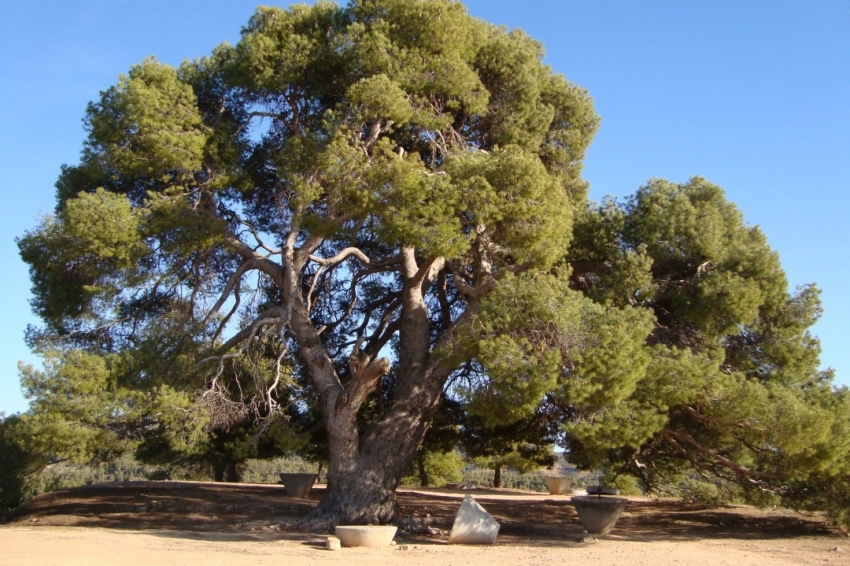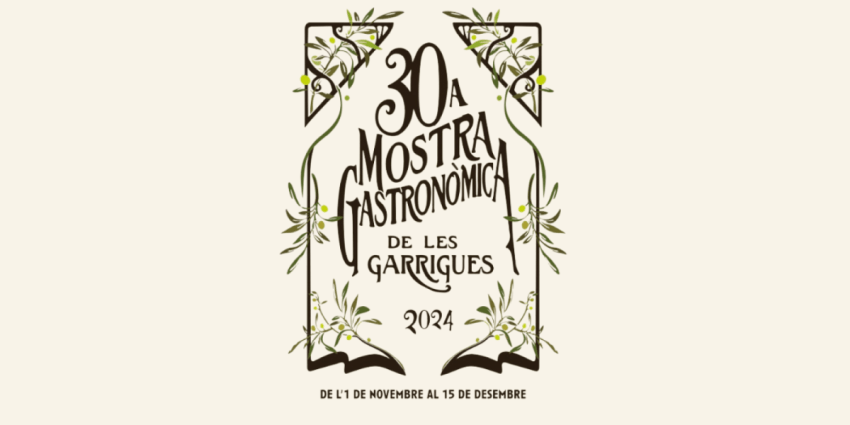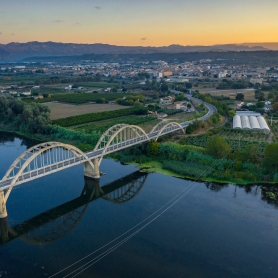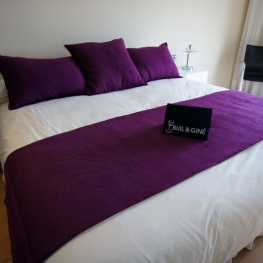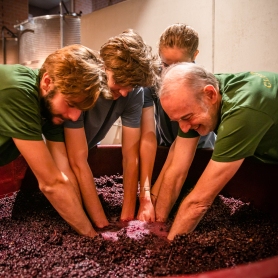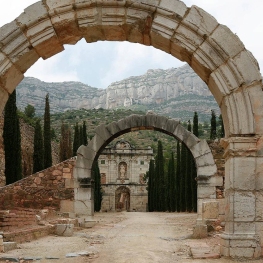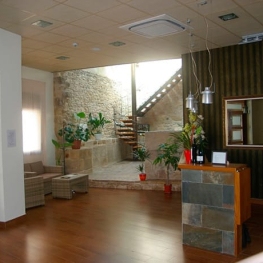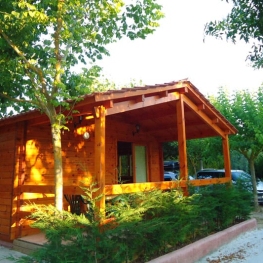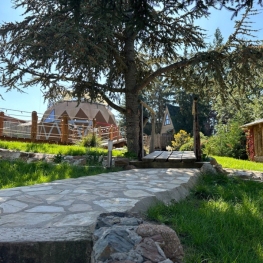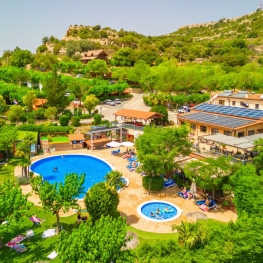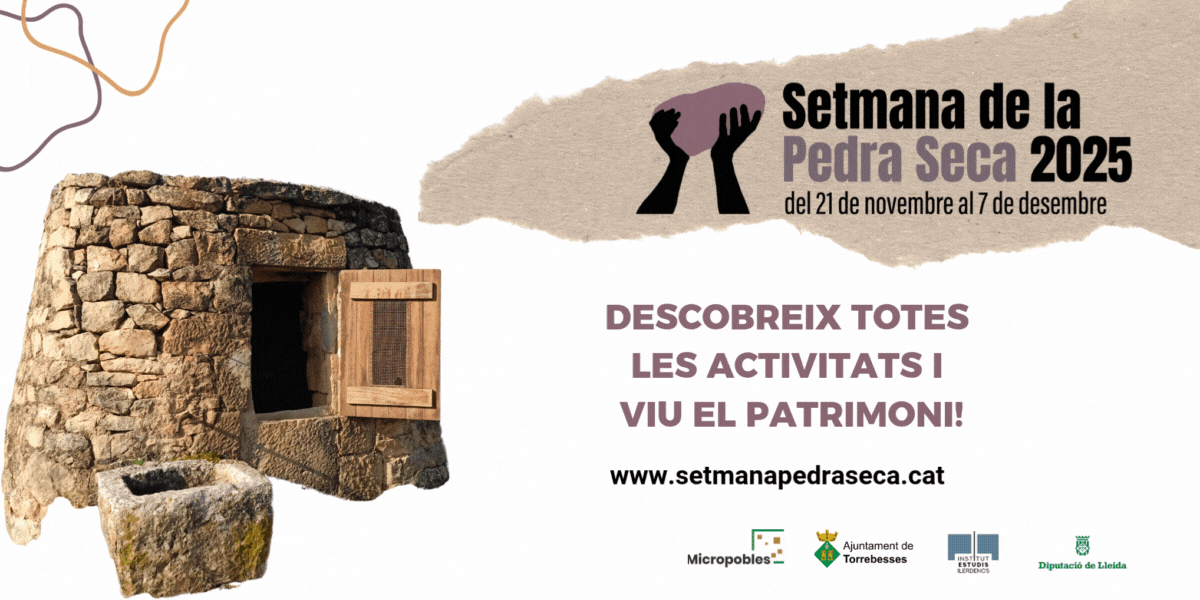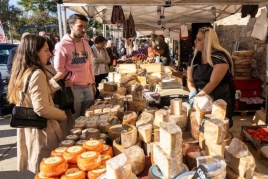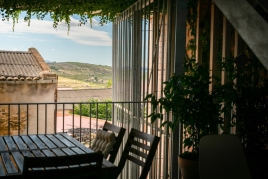La Palma d'Ebre
Municipality of the Ribera d'Ebre located in the highest and northernmost part of the region, bordering Les Garrigues, from which it is separated by a narrow strip of the municipality of Flix, and also bordering Priorat.
The municipal area covers an area of 38.31 km² and is crossed by the Valle Mayor (Greater Valley). The hydrography is represented by numerous springs and wells scattered throughout the area. The town is located at an altitude of 335 meters between the Valle de las Piezas (Pieces Valley) and the Font Vella ravine, and is the only populated center.
The main source of livelihood for its inhabitants is agriculture. The most widely cultivated crop is the Arbequina olive tree, followed closely by almonds and grapevines.
History
There is no exact record of the town's founding, although many vestiges from the period of Arab rule remain, suggesting that the town already existed at that time.
The first document on the town dates back to 1262, when James I and Teresa Gil de Vidaure granted a deed of sale for the castle of Flix and the town of La Palma in Arnal de Bosc. At the beginning of the 14th century, La Palma was governed by the Commander of Ascó, which was part of the castellan of Tortosa. Later, in 1318, it passed into the hands of the Hospitallers, when this Order assumed the Grand Priory of Catalonia.
In 1399, Barcelona acquired the baronies of Flix and La Palma, which remained under its dominion during the 15th, 16th and 17th centuries, except during the years 1462 to 1472, when they were under the control of Alfonso of Aragon, during the wars against John II. This possession was important for Barcelona, since its strategic location between both sides of the Ebro River gave it great control over the passage of navigable goods along the river, thus avoiding the high tax charged by Tortosa for transport.
During the Reapers' War, Barcelona lost control over Flix and La Palma, and the town became involved in several wars. In 1670, Flix and La Palma were returned to Barcelona, but lost them again in 1673.
From the 18th century onwards, no documents have survived due to the destruction of local archives between 1810 and 1936.
Places of Interest:
The Pine of La Palma
A majestic pine tree stands in the middle of La Palma d'Ebre, symbolizing the strength and vitality of the town. With its branches stretched toward the sky, it offers welcoming shade to visitors and locals on warm summer days. It is a popular meeting point and a constant reminder of the region's natural heritage.
Mural of the Font Vella
A stunning mural decorates the side of a building near Font Vella, captivating the attention of those passing by. This work of art captures the rich history and culture of La Palma de Ebro, depicting scenes of daily life from the past and present. It is a living testament to the identity and diversity of the local community.
Old Prison
The ancient walls of the Old Prison evoke times past and stories that have left their mark on the collective memory of La Palma d'Ebre. This historic building serves as a reminder of the challenges and struggles of the past, as well as the triumphs and resilience of the people. It is a place of reflection and respect for local history.
The Reservoir
The reservoir is an impressive engineering feat that dominates the landscape of La Palma d'Ebre. This vast body of water provides a lifeline for the region, providing water for irrigation and creating a natural environment rich in biodiversity. It is an ideal spot for birdwatching and enjoying the outdoors.
Reservoir Road
The Reservoir Trail offers a unique opportunity to explore the natural surroundings of La Palma d'Ebre. This scenic route winds alongside the reservoir, offering spectacular views and opportunities to observe the local flora and fauna. It's a perfect place for peaceful walks and moments of contemplation.
Parish Church of the Assumption
With its impressive architecture and prominent location in the center of town, the Parish Church of the Assumption is an iconic landmark in La Palma d'Ebre. This religious structure has a rich history and profound significance for the local community, serving as a place of prayer, celebration, and gathering for generations.
Romanesque church (12th – 13th centuries)
The Romanesque church is an architectural treasure dating back to the 12th and 13th centuries, representing a bygone era in the religious history of La Palma d'Ebre. Its unique architectural features and timeless beauty captivate visitors, transporting them to a time of devotion and spirituality.
The Stoldrans Trail and the Creu Pass
The Camí dels Stoldrans and the Collado de la Creu offer an experience of adventure and discovery through the landscape of La Palma d'Ebre. This route winds through the forest and mountains, passing by stunning natural sites and points of historical interest. It's an opportunity to connect with nature and explore the region's most hidden corners.
Nearby routes
See all routes »- Wine lands Priory (a 13.6 km)
- Guided tour through the Landscapes… (a 17.1 km)
- Guided route of the oil in Torrebesses (a 17.1 km)
- Route of the hermitages of Ulldemolins (a 18.1 km)
- Sundials in Porrera (a 19 km)
What to do
Hotel Celler Buil & Giné
Gratallops (a 12.6 Km)A unique experience, a different and unique accommodation, we offer the possibility…
Celler Clos Pachem
Gratallops (a 13.6 Km)Clos Pachem was founded in Gratallops in 2015 by Michel Grupper. A…
Cartoixa d’Escaladei
La Morera de Montsant (a 12.4 Km)La Cartuja de Escaladei is a monastery that welcomed the Carthusian monks,…
Where to eat
Restaurant Hotel Nou Moderno
Vilalba dels Arcs (a 28.3 Km)Hotel restaurant to enjoy the tranquility of Terra Alta and try the…
Where to sleep
Hotel Celler Buil & Giné
Gratallops (a 12.6 Km)A unique experience, a different and unique accommodation, we offer the possibility…
Càmping Prades Park
Prades (a 26.1 Km)Camping Prades Park offers an ideal setting for what most appeals to…
Hotel rural - Xalet de Prades
Prades (a 27 Km)Immerse yourself in the nature of the Sierra de Montsant Natural Park…
Càmping Capfun Serra de Prades
Vilanova de Prades (a 25.4 Km)In the heart of nature, the Prades campsite is located in Vilanova…
Events
Experiences
Come and discover the true Spirit of Christmas!
Museu del Ferrocarril de Móra la Nova (Móra la Nova) (a 19.7 Km)

